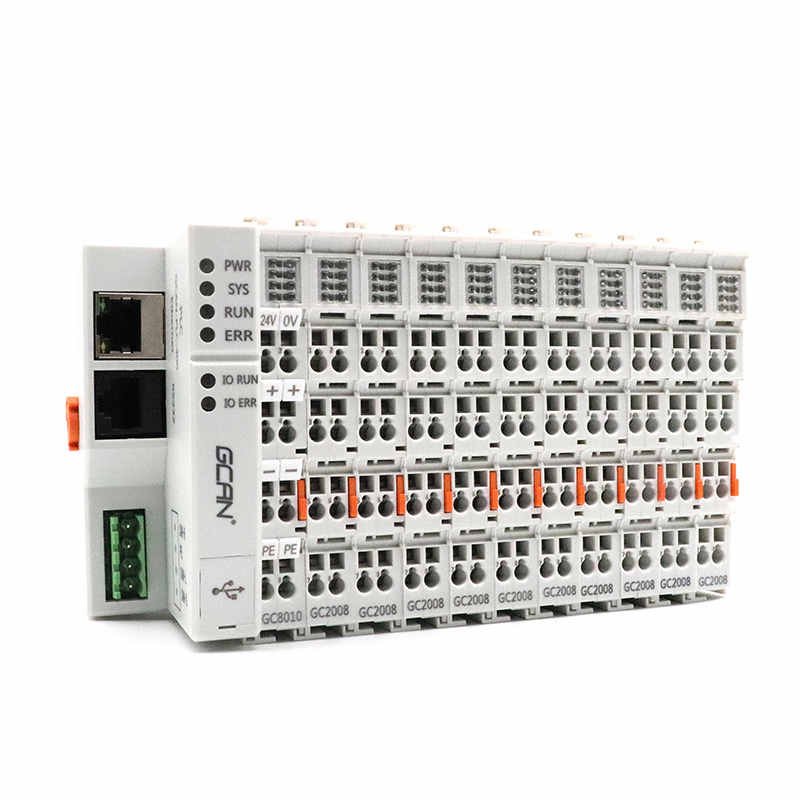Until the PLC was created in 1968, industrial processes were handled by a series of hardwired relay banks, timers, and counters. These banks required a large amount of space and were time consuming to troubleshoot. If a relay went bad, the entire system would fail. The creation of the PLC allowed that extensive system to be replaced by a single module. Using ladder logic, technicians could easily program the PLC to perform the same processes previously handled by the banks of relays and timers. The PLC retained its memory in the event of power loss and was resistant to the dirt and grime found in industrial processes.
PLCs have evolved astronomically since those early years. From graphical interface to wireless connectivity to machine learning, today’s PLCs are light years beyond that of their ancestors. Customers can now tailor fit PLCs to meet the needs of their applications.
When selecting a PLC, there are several considerations a customer must first address to ensure the proper fit for their application.
The first factor to evaluate is the number of I/Os needed for your application. How many analog or digital inputs and outputs will you need? Will there be PWM outputs? What are the voltage and current requirements for your I/Os?
There are several types of outputs to consider.
- Solid State use transistor outputs PNP or NPN and are subject to low voltage and current restrictions.
- Relay outputs are shown as normally open (NO) or normally closed (NC). They are typically paired but may also share a common contact with multiple outputs. Relay outputs allow higher voltages and currents due to their isolation from the PLC.
- PWM or Pulse outputs can vary their output levels, which is useful to control devices such as motors.
- Digital outputs provide a constant voltage. They are logic based and can be used to activate relays or indicators.
- Analog outputs are typically used to send a varying signal to another device for interpretation. The analog output is categorized by voltage or current, typically 1 – 5V, 0 – 10V, 0 – 20 mA, or 4 – 20 mA.
Interface is another important aspect for your PLC. Many PLCs now come with an integrated touchscreen or LCD and pushbuttons. This will provide you with the ability to make changes to the PLC on the fly. While most PLCs will communicate with a laptop or computer, many can now interface with mobile devices such as tablets and even smart phones.
Communication is the next factor to consider, and there are many different protocols available today including Compobus, DeviceNet, Ethernet/IP, EtherCAT, RS-232C, RS-422, and RS-485. Ethernet/IP and EtherCAT have become very widely used as they are the only two of the aforementioned protocols to have internet capability. Ethernet/IP has a potential data rate speed of 1 Gbps, and EtherCAT is at 100 Mbps. Both have a maximum cable length of 100 meters. With the onset of IIoT, many PLCs are also coming to market offering wireless communication. It is no longer uncommon to find PLCs with the ability to wirelessly update information with a secure cloud through cellular communication.
Programming is another aspect to evaluate. Programming software varies from manufacturer to manufacturer. Some manufacturers offer free downloads, while other software must be purchased separately or requires a subscription. The software is typically unique to the PLC. Looking at the software packages will give you an idea of the required programming languages, which is helpful as you may be more familiar with one language and less with another.
Most PLCs do not come equipped with a power supply, so once you have selected your PLC you will want to examine your power requirements. Whether your PLC requires 24VDC or 110VAC, you will need to find a separate power supply that meets the necessary requirements.

Looking for a PLC I/O Coupler? Click to learn more!
